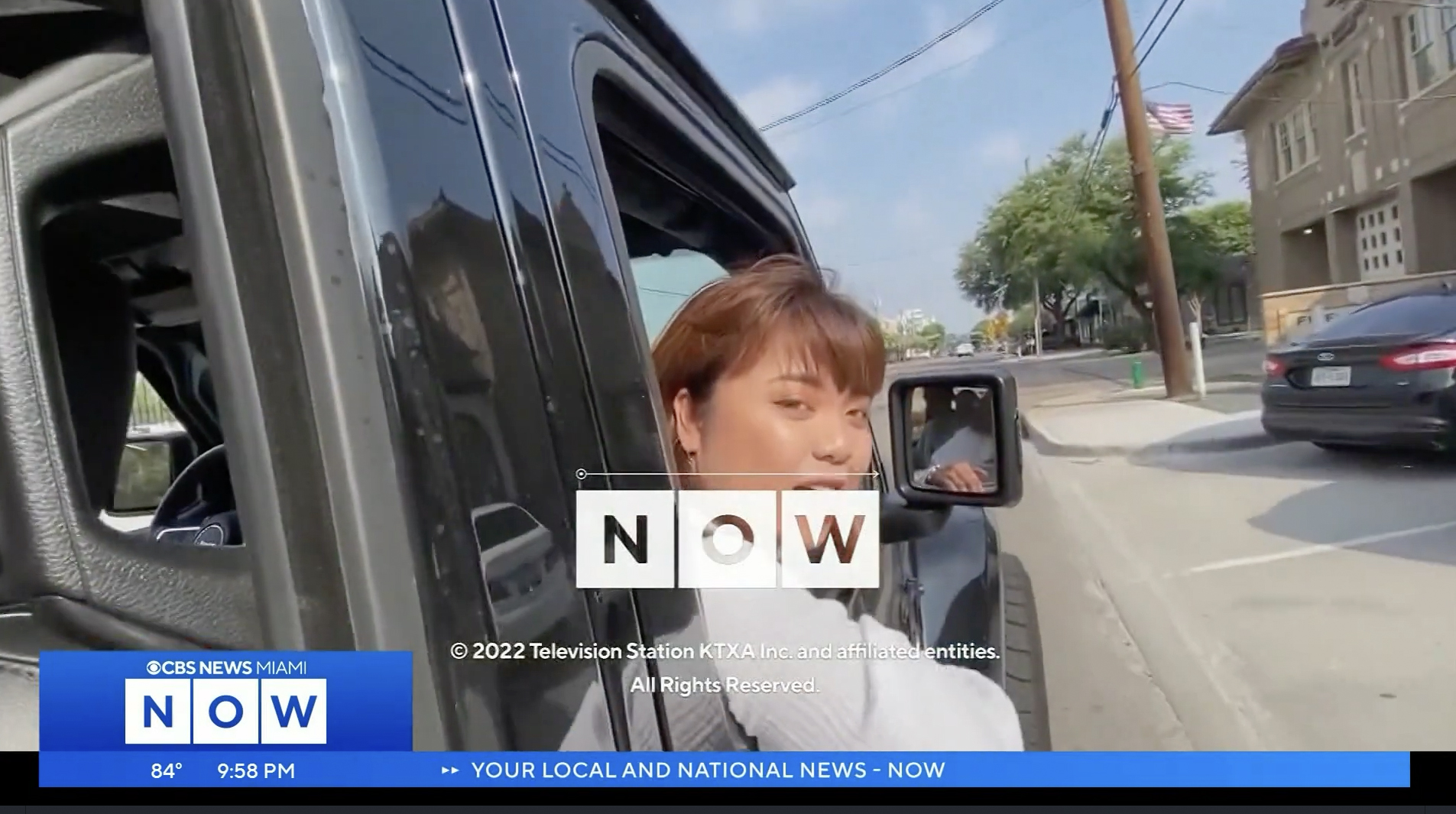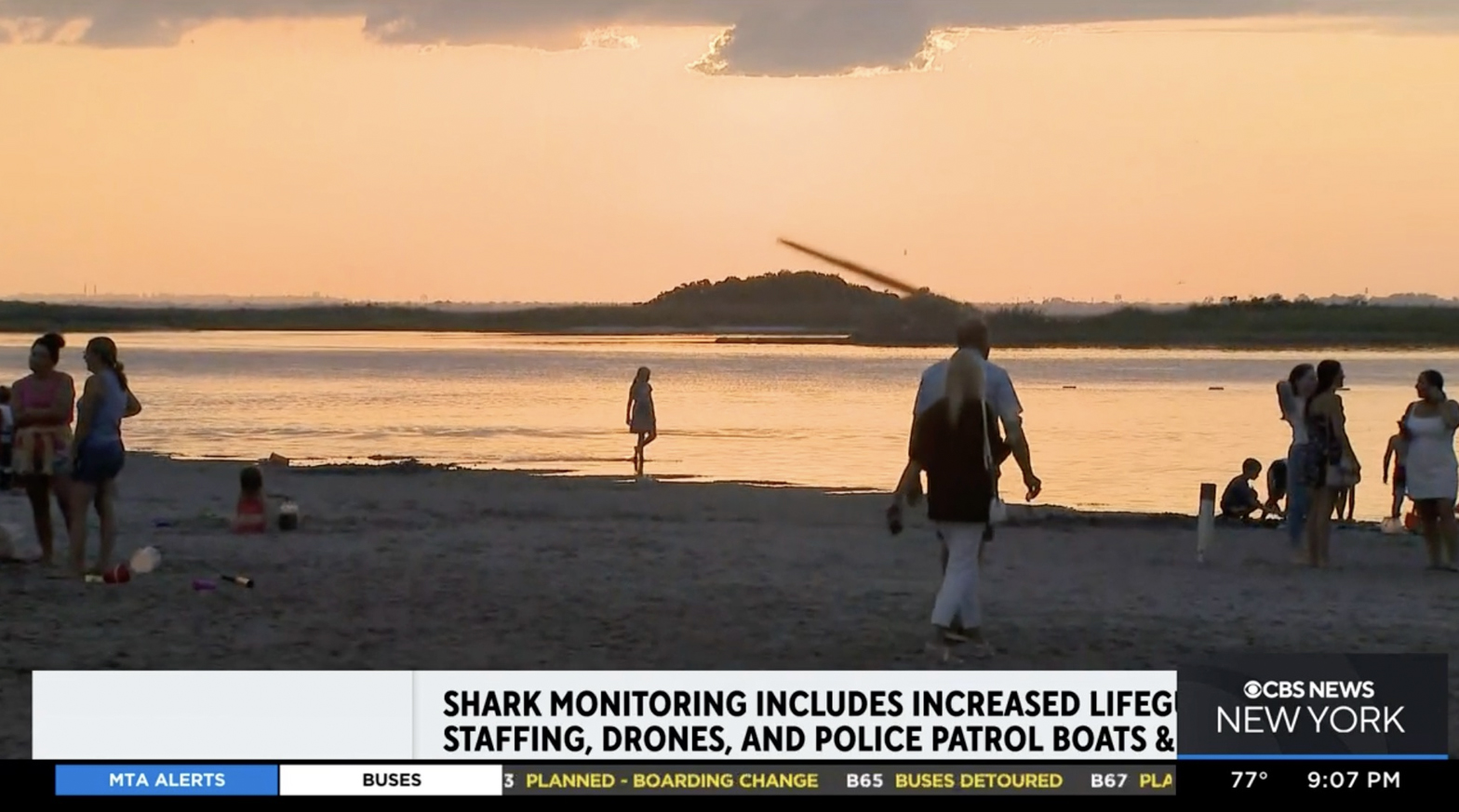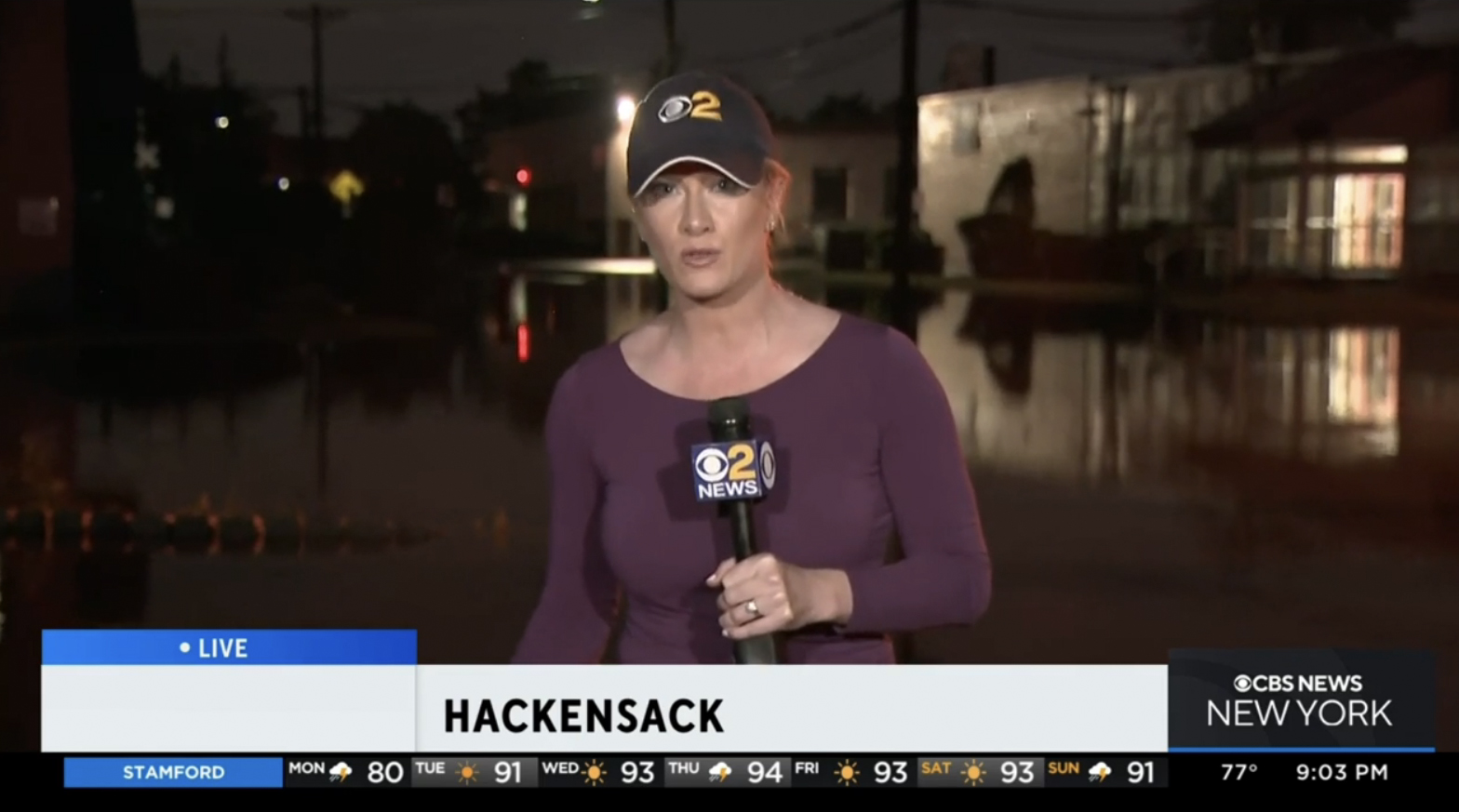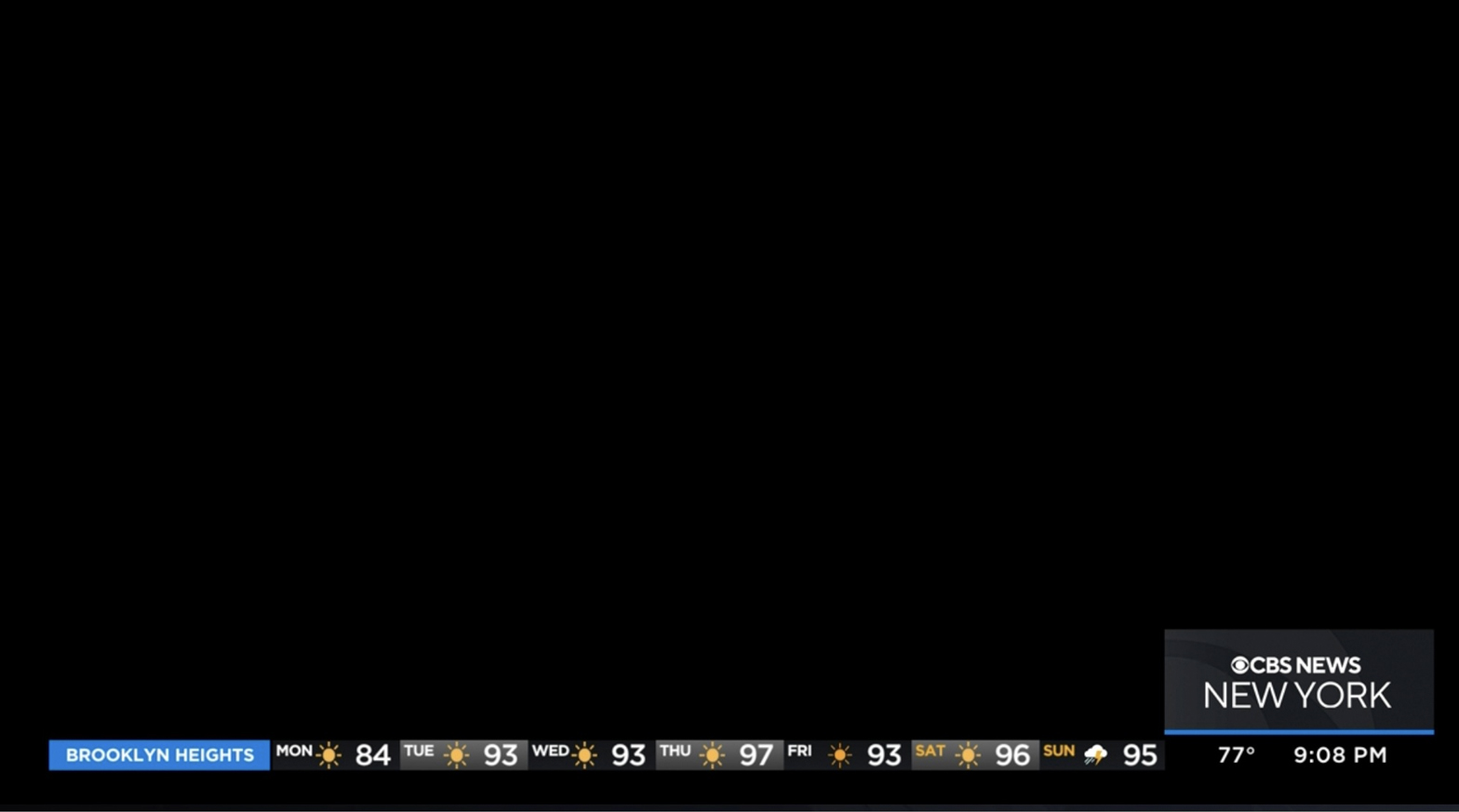CBS-owned stations debut ‘Now’ newscasts

Subscribe to NCS for the latest news, project case studies and product announcements in broadcast technology, creative design and engineering delivered to your inbox.
As NewscastStudio was first to report last week, CBS-owned stations in select markets launched a series of new hybrid, national-local newscasts across the country July 18, 2022.
All told, CBS launched 10 new newscasts, all branded around the word “Now,” in markets across the country in either the 9 or 10 p.m. local timeslot. The newscasts are on independent, CW or MyNetworkTV stations owned by CBS News and Stations.
Tom Hanson appeared as the solo national anchor for the debut newscast but was seemingly joined by local talent from other cities.
In select markets where CBS does not have a local news operation, talent from another CBS station filled these roles.
For example, Dallas anchor Karen Borta appeared in local segments for both “Detroit Now News at 10 on CW50” and “Atlanta Now News at 10 on Atlanta’s CW,” two markets that CBS currently does not have a local news presence (Detroit is expected to launch a local news operation later in 2022).
At launch, the general format follows the approach of an anchor reading national teases before opening the newscast and immediately tossing to locally-produced news and a brief weather segment. A full local weather segment was featured in the third block.
When the initial local news and weather brief end, the broadcast switches back to the national feed where the day’s news is covered.
Launch day included coverage of the heat wave hitting parts of the world and country, which included a meteorologist standing in front of weather graphics that largely match those currently being used at CBS-owned stations but without any branding to avoid conflicts between stations using “Next Weather” or “First Alert” banners.
At the half-hour mark, a national recap of top stories aired followed by another local news and weather insert and more national content.


Stations were also given an additional standalone weather segment in this second half hour, with the broadcast wrapping with an “around the country” style segment. In the premiere edition, this was labeled as a “Hope Tracker” that mixed person-on-the-street interviews with expert advice and incorporated a U.S. map with circular cutouts to communicate the location of each person.


The end of the broadcast featured Hanson signing off and a closing that gave copyright credit to “Television Station KTXA Inc. and affiliate entities,” referring to the legal entity that owns KTXA but is ultimately owned and controlled by CBS and its parent Paramount Global.
As expected, the new newscasts largely take on the look that CBS as a network has been transitioning to, based on the “deconstructed eye” that first started appearing in 2020 and would most prominently become the look used by the national CBS News Streaming Network earlier in 2022.


Elements of this are particularly visible in the national open, stingers and the “across the country” segment at the end of the newscast.
CBS-owned stations are in the process of designing a new groupwide graphics package that is expected to draw on this design language.
For national anchor segments, Hanson appeared in front of a graphic that matches this aesthetic with a subtle, monotone U.S. map with slight 3D effects applied to it. Local segments were recorded on various parts of the stations’ sets or chroma key setups. The Dallas-produced segments for Detroit and Atlanta were also done with chroma key, with Borta standing in front of a bright blue “Now” themed backdrop with subtle extruded lettering.
In most markets, the new “Now” newscasts were simulcast on the local CBS News streaming network, though these feeds, which are separate from what local viewers saw on TV, had some glitches.


In New York, the streaming feed neglected to kill off the CBS News New York bug in the lower right corner, causing it to cover part of the lower third, which follows the national CBS News Streaming Network format of having the bug on the left.


Some online streams, meanwhile, consequently had an odd large blank box on the left side of the screen, which, on TV, was filled with a localized version of the “Now” logo.
Streaming viewers also reported that some newscasts cut off around the 30-minute mark.
Both issues likely indicate that the streaming feed was not properly updated with the correct bug coordinates and graphics or to accommodate the new programming.
CBS News’ regional streaming networks currently use a mix of the CBS O&O graphics package, when broadcasts are simulcast, and a separate one developed for streaming only, which ties in with the bug box in the lower right corner. The national CBS News Streaming Network, however, uses a completely distinct graphics package from either of these that, in turn, is being largely leveraged for the “Now” newscasts.


CBS News New York also sat in black for over two minutes at one point early in the hour and KTXA’s online feed had music playing over it for no apparent reason during the first few minutes with no anchor audio.
As a whole, “Now” newscasts tend to have a bit of a formulaic feel to them — for example, there are noticeable pauses for talent to start talking when transitioning from local to national segments which could be edited a bit tighter to maintain a better flow. Whether a typical viewer would notice or realize why is an open question.
The launch does allow CBS to air another hour of original content on stations that likely would be airing a syndicated show or off-network repeat at the time, thus keeping all of the ad revenue. In markets where the newscasts air, this could open up local ad inventory in what is already a robust political advertising year and give local businesses additional, and likely more affordable, options for marketing.
None of the on-air talent being used are new hires nor dedicated to the broadcasts, meaning the broadcast likely has low production costs that consist mainly of the behind-the-scenes crew, writers, video editors and other newsroom staffers who are likely already on staff and doing similar job functions.
In cases such as local segments for Atlanta, the “innovation lab” that CBS created in Dallas crafted a way to remotely produce local news for another city, which is hardly new in broadcasting.
On some levels, the “Now” model is comparable to previous hubbing approaches used in the past, such as Sinclair’s News Central effort. However, it does have the advantage of using more local, familiar talent on most iterations of the broadcasts, especially for weather, which Sinclair’s approach handled at the national level.
CBS’s “Now” approach also does not appear to have any immediate significant direct implications on local staffing levels that News Central saw (though CBS News and Stations has been hit with other staff reductions in recent years). In fact, the effort appears to be a way to leverage existing resources and add a broadcast, rather than find ways to produce existing newscasts with fewer resources.
In most markets and at the national level, CBS can leverage existing content or rely on locally owned or affiliated stations to gather original pieces such as the clips used in the “Hope Tracker” segment, since it already has local news operations on the ground and a full network-level newsgathering enterprise.
Subscribe to NCS for the latest news, project case studies and product announcements in broadcast technology, creative design and engineering delivered to your inbox.







tags
CBS, CBS News and Stations, CBS Stations
categories
Branding, Broadcast Design, Broadcast Industry News, Heroes, Local News